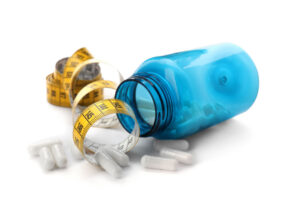Deciding between ADHD medications can be confusing and frustrating, especially when they’re as similar as Vyvanse and Ritalin. These medications are two of the most widely prescribed stimulant medications to treat ADHD. Which one is better for you depends on things like coinciding health issues, other medications you’re taking, and how old you are.
This article will discuss how these medications are similar and different and indicate the risk factors. This information can help you decide which one might be more effective for treating your ADHD.
If you are considering stimulants like Vyvanse or Ritalin to treat your ADHD, a psychiatric professional will help you determine which, if any, medication is best for you. Klarity can match you with a licensed healthcare provider in your state within 48 hours for convenient and affordable virtual ADHD treatment. Schedule an appointment on Klarity today.
| Vyvanse | Ritalin | |
|---|---|---|
| Drug Class | Schedule II stimulant | Schedule II stimulant |
| Brand / Generic Status | Brand name (no generic) | Brand name for methylphenidate |
| Form(s) of the Drug | • Extended-release capsules* • Extended-release chewable tablets *Capsules should not be crushed or chewed |
Immediate-release tablets; Extended-release capsules |
| Standard Dosage | 5 mg, 10 mg, 20 mg, 30 mg, 40 mg, 50 mg, 60 mg, and 70 mg capsules OR chewable tablets |
Standard tablet dosages: • 5mg • 10mg • 20mg • 40mg |
| Conditions Treated | FDA-approved for: • ADHD, • Binge-eating disorder Off-label uses: • N narcolepsy, • bBinge-eating disorde |
FDA-approved uses: • ADHD • Narcolepsy |
| Cost | Brand-name: • $400 to $450 for 30 days of 30mg capsules or chewable tablets |
Generic form (methylphenidate): • $50 for a one-month supply |
| Side-Effects | Common side effects: • Anxiety • Diarrhea • Dizziness • Dry mouth • Irritability • Nausea • Trouble sleeping • Vomiting • Weight loss • Upper stomach pain Serious side effects: • Blurred vision • Irregular or fast heartbeat • Muscle twitching • Uncontrolled movements • Blood flow problems in the fingers and toes • Swelling in the ankles and feet • Rapid and unexplained weight loss • Mood changes, including aggression and depression |
Common side effects: • Loss of appetite • Anxiety • Trouble sleeping • Elevated heart rate • Increased blood pressure Serious side effects: • Blurred or changed vision • Uncontrollable outbursts or tics • Chest pain • Fever • Joint pain • Allergic reaction • Hives • Swollen face or hands • Trouble breathing |
| Warnings For Use | Contraindicated for: • History of substance abuse • Heart abnormalities • Circulation issues • Mental health issues |
Contraindicated conditions: • Heart condition • History of drug abuse Adverse drug interactions: • Blood thinners • Blood pressure medication • Seizure medication • Antidepressants • Decongestants |
What is Vyvanse?
Vyvanse (active ingredient: lisdexamfetamine dimesylate) is a once-daily time-released stimulant used to primarily treat ADHD in children, adolescents, and adults. Vyvanse is not considered a narcotic, but it is a schedule II controlled substance with the potential for abuse and addiction.
Vyvanse helps people with ADHD improve focus while decreasing impulsivity and hyperactivity. It has been FDA-approved for use since 2007.
Forms and Dosages
Vyvanse is a prodrug, meaning that it has to be digested, absorbed within the body, and metabolized by the liver before it turns into the active form of the medication. To aid this process, Vyvanse is prescribed orally as a capsule or chewable tablet. Doses begin at 5 mg and are available in stronger doses at 10 mg, 20 mg, 30 mg, 40 mg, 50 mg, 60 mg, and the max dosage of 70 mg.
Vyvanse is taken once a day, first thing in the morning, with or without food. Do not take Vyvanse after 12 PM as it may disturb your quality of sleep.
Conditions Treated
Vyvanse is FDA-approved to combat attention-deficit hyperactivity disorder (ADHD) and treat binge eating disorder (BED).
Costs
Vyvanse is currently not available in generic form, so it is one of the costlier ADHD medications. The average retail cost of a one-month supply of Vyvanse without health insurance is approximately $400-$450. Speak with your health insurance provider to see if they cover this ADHD medication, or visit the manufacturer online to receive a one-time coupon for use in any pharmacy.
For accurate information on pricing under your current health insurance plan, contact your provider’s pharmacy department.
Side Effects
Because it is time-released and has a controlled output into your bloodstream, Vyvanse has a much more subtle effect on the body and mind than some other ADHD stimulants. Side effects from Vyvanse include but are not limited to:
- Nausea
- Diarrhea
- Dry mouth
- Anxiety
- Irritability
- Decreased appetite
- Trouble sleeping
- Dizziness
- Vomiting
- Weight loss
More severe but less common side effects of Vyvanse include:
- Blurred vision
- Irregular or fast heartbeat
- Mood changes, including aggression and depression
- Muscle twitching
- Uncontrolled movements
- Blood flow problems in the fingers and toes
- Swelling in the ankles and feet
- Rapid and unexplained weight loss
Warnings and Drug Interactions
Vyvanse is a Schedule II stimulant medication, classified as a federally controlled substance, due to its potential for abuse and dependency. To avoid abusing this medication, do not take more than prescribed or share medications with others. Vyvanse can also exacerbate certain mental health conditions. Be sure to follow up with your healthcare provider regularly to monitor how Vyvanse may be affecting you.
Additionally, it’s important to note that Vyvanse can cause issues for individuals with cardiac abnormalities or circulatory problems. Therefore, if you have a history of heart problems, it is crucial to consult your healthcare provider before considering this medication.
Furthermore, if you are currently taking any form of antidepressant medication, it is advisable to inquire with your healthcare provider about possible drug interactions before starting Vyvanse. Understanding potential interactions is essential for your safety and to ensure the effectiveness of both medications.
Licensed providers on Klarity provide personalized treatment. Find a provider that matches your needs and preferences.
What is Ritalin?
Ritalin (active ingredient: methylphenidate) is a central nervous system stimulant used to treat attention-deficit hyperactivity disorder (ADHD) by targeting neurotransmitters in the brain that control hyperactivity, impulsivity, and focus.
Forms and Dosages
Ritalin comes in 5 mg, 10 mg, 20 mg, and 30 mg doses.
The standard Ritalin formula is an instant-release formula (IR), although this medication does come in an extended-release formulation. The typical starting dose for an adult is 20 mg per day, twice a day, and is best taken 30-45 minutes before a meal. Ritalin SR tablets, the extended-release formula, is active in the body for up to eight hours.
Conditions Treated
Ritalin is primarily used to treat ADHD and a sleep disorder called narcolepsy.
Costs
Ritalin comes in branded and generic forms. A one-month supply of 5 mg generic Ritalin fetches upwards of $50 at your local pharmacy without health insurance. For accurate pricing for Ritalin under your current health insurance plan, contact your provider’s pharmacy department.
Side Effects
Common Ritalin side effects include but are not limited to:
- Sweating
- Increased blood pressure
- Mood changes
- Anxiety
- Trouble sleeping
- Increased heart rate
- Weight loss
- Dry mouth
- Nausea
- Vomiting
- Stomach pain
- Indigestion
- Headache, dizziness
If you experience swelling, hives, or any other sign of an allergic reaction while taking Ritalin, seek emergency medical attention immediately. Call a healthcare provider at once if you experience any kind of psychosis while taking this medication, including hallucinations, paranoia, aggression, or new behavior issues.
Warnings and Drug Interactions
Dependency warning: Ritalin is a Schedule II stimulant medication with the potential for dependency, abuse, and addiction—which is why it’s important to tell your healthcare provider if you have a history of substance abuse. Long-term dependency on Ritalin can cause physical and psychological dependence, cardiac issues, and—in extreme cases—death. is important to be aware of the habit-forming nature of Ritalin. Therefore, if you have a history of substance abuse, it is crucial to disclose this information to your healthcare provider before considering Ritalin.
Additionally, if you’ve used an MAO inhibitor in the past two weeks, it is essential to consult with a healthcare provider before taking Ritalin, as complications may arise. It’s important to note that Ritalin may also cause worsening symptoms for individuals with mental disorders such as depression, bipolar disorder, and psychosis.
Furthermore, if you have cardiac issues or circulatory problems, it is necessary to speak with a healthcare provider before taking Ritalin. Your healthcare provider can assess the potential risks and benefits of Ritalin in your specific case, taking into account your medical history and individual circumstances.
Vyvanse or Ritalin: Which Medication Is Best For Your ADHD?
While Vyvanse and Ritalin are both commonly used to treat ADHD, there are a few distinctions between the medications that might make one more effective than the other for certain patients. Vyvanse contains the drug lisdexamfetamine dimesylate, and Ritalin contains methylphenidate.
Both Ritalin and Vyvanse have the ability to reduce symptoms of ADHD like restlessness, poor focus, and hyperactivity. They both increase dopamine and norepinephrine levels, which are typically lowered in ADHD patients.
The main difference between these two active drugs is their form. Ritalin enters the body in active form, meaning patients will notice the effects of this drug faster. However, this also means they will have to take more Ritalin to sustain its benefits. Vyvanse enters the body in an inactive form, and while it takes 1-2 hours to begin working, the effects are more long-lasting.
Ritalin does come in an extended-release form, but typically patients will have to take Ritalin pills more frequently than Vyvanse.
Additionally, these two drugs are able to treat other conditions as well. Vyvanse is often prescribed to treat Binge Eating Disorder, which is characterized by uncontrolled eating within a short period. Ritalin, along with treating ADHD, can also treat narcolepsy, a sleeping disorder that causes uncontrolled daytime sleepiness.
Ritalin and Vyvanse are two potent and popular medications for combating the symptoms of ADHD. Consult an ADHD specialist about which medication may be better suited for your type of ADHD.
Schedule a Same-Day Online Appointment With Klarity
If you have ADHD and are looking for a reliable healthcare provider to prescribe ADHD medications like Vyvanse and Ritalin, Klarity can help. We connect patients with healthcare providers for affordable and convenient online ADHD treatment.
Your provider can diagnose your symptoms and develop an individualized treatment plan for your ADHD, which can include prescription medication, if necessary. Schedule an appointment today to start your journey toward relief from your ADHD symptoms.







